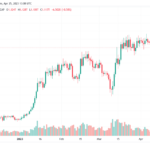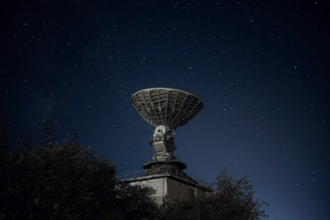With new draft laws in countries around the world aimed at the crypto industry, Stephen Rust, CEO of Laguna Labs, has said that centralized regulations will stifle the innovation seen within the crypto space.
Stephen Rust states that “the foundation of cryptocurrency is one that is in contrast to the global regulation and centralized financial system that regulators seek to maintain and protect.”
Are you looking for fast-news, hot-tips and market analysis? Sign-up for the Invez newsletter today.
Crypto law raising eyebrows
There are two draft laws that have raised eyebrows within the crypto industry.
In the US, Congress is currently negotiating responsible digital asset development President Biden’s March 9 Executive Order, Two bills in particular are under consideration in the US, both of which focus on USD-pegged stable coins,
The passage of one of the bills under consideration in the US will require one-to-one reserve support for USD-pegged stablecoins providers. There is another bill that, if passed, would force USD stablecoin providers to fully disclose their reserve assets.
The third bill under negotiation in the US is aimed at limiting algorithmic stablecoins. The law would allow the US Securities and Exchange Commission (SEC) to impose a two-year ban on the creation or issuance of new algorithmic stablecoins. It furthermore sees the regulator as a threatening threat to the global financial ecosystem.
The US bill targeting algorithmic stablecoins specifically refers to “endogenously” collateralized stablecoins: a term used to refer to stablecoins whose value is another one created specifically for that purpose. Secured by digital assets. To be precise, the bill focuses on algorithmic stablecoins like the famous Terra Luna UST feat Which led to the collapse of the original Terra Luna project. Those behind the Terra Luna debacle, which pulled out nearly $60 billion, are facing legal battles in South Korea, including do kwon Who is the founder of Terra Foundation?
Away from the United States, the European Union (EU) is also set to publish the much-awaited Markets in the Crypto Assets Regulation Act (MiCA), MiCA would require crypto companies to register with regulatory authorities, provide clear information to new investors, and hold enough capital to back stablecoins.
Centralized regulation is bad for crypto
The first cryptocurrency bitcoin (BTC/USD) was created in 2009 to counter the mess that resulted in the global financial crisis of 2008/09. The financial crisis resulted from unethical and illegal lending practices at many banks, leading to a catastrophic financial meltdown that robbed millions of jobs, savings, homes, and more. This was followed by massive government bail-outs and loose monetary policies in most Western countries.
In response to all this the founders created a fully decentralized monetary system free from the control of any government, individual or organization. He only identified the shortcomings of traditional financial institutions and sought people-driven solutions. Therefore, the foundation of cryptocurrency is in contrast to global regulation and centralized financial systems.
According to Stephen:
“Many in the industry are welcoming some or all of these regulations. However, we must be careful. Governments around the world are now clearly recognizing the emergence of crypto, which is too big to slowly fail. Not least because institutional investors are increasingly entering the market. And of course, looking after the interests of institutional investors is one of the top priorities for global regulators.”
best self regulation for crypto
Although Stefan is against centralized crypto regulation, it does not mean that he is against regulation of the industry as a whole.
Lessons have certainly been learned after the disastrous UST collapse And many crypto hacks and exploits that have become so rampant within the crypto space.
According to Stephen:
“Unlike traditional finance, the crypto industry is still largely a community of builders who are solely interested in innovation and progress. Indeed, while the SEC has proposed a two-year ban to understand that an algorithmic What is a stablecoin, these builders have already moved beyond UST.
Led by founders and investors like Sam Bankman-Fried, the industry has already implemented significant changes, with a focus on consolidating failed centralized platforms and bringing them back into the fold of decentralized finance – where crypto belongs. Is. At the same time, innovators are creating new types of “stable” tokens, backed by more meaningful assets than rapidly depreciating fiat currencies.
Laguna Labs’ FlatCoin Project
Stefan goes on to give an example with Laguna Labs working on a “flatcoin,” a type of token that gains its purchasing power from the moment it is sold. The token known as “Nuon” is basically tied to a basket of consumer goods and services that represent an increasing cost of living for an average person.
Nuon is designed to hold its peg through a dynamically adjusting algorithm that differs from the likes of the UST stablecoin. It is also completely decentralized.
Describing his belief, Stephen said:
“We and other innovators like us believe that crypto should provide a real and viable option for the average people so that they can preserve, protect and grow their wealth, privacy and freedom. It is a kind of innovation. which is essential in a thriving economy and which is in danger of being crushed by blunt means of centralized regulation.”
Invest in crypto, stocks, ETFs and more in minutes with our favorite broker, eToro,
10/10
68% of retail CFD accounts lose money
















